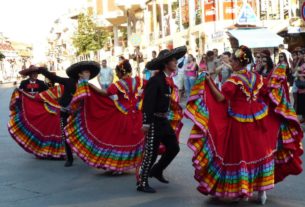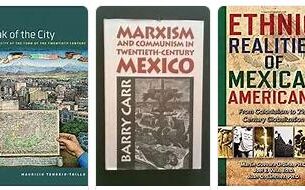LITERATURE
According to vaultedwatches, Mexican literature of the colonial age reproduces in a minor tone the schemes and forms of the literature of the motherland, even if there are sporadic aspirations to start an indigenous literature. The 17th century. it is dominated in the literary field by the imitation of L. de Góngora and P. Calderón de la Barca. Among the most notable personalities of this period, which boasts among others A. de Saavedra Guzmán (second half of the 16th century), F. González de Eslava and B. de Balbuena (16th -17th century), stand out, for richness and variety of motifs, Sisters Juana Inés de la Cruz and C. Sigüenza y Góngora (both 17th century).
While the influence of the Spanish Baroque continued throughout the first half of the 18th century, in the second half the European Enlightenment brought to maturity those political and social anxieties which prepared the independence movements and which were reflected in the literary field in a awareness of the Mexican reality. More than the Memorias of fray Servando Teresa de Mier or the poems of fray Manuel de Navarrete (both 18th-19th century), the novel El Periquillo Sarniento (1816) by JJ Fernández de Lizardi is symptomatic of this new spiritual attitude, than in the footsteps of picaresque literature Spanish begins the Hispano-American short story with its own characteristics. Romanticism, starting around 1830, favors a real movement of culture, re-proposing problems of art, philosophy, politics: art tries to refer to traditions, genius, the history of the people, creating forms that outwardly they repeat those of European literatures, a literary renewal responding to modern consciousness. The best known interpreters of this transformation are I. Rodríguez Galván and F. Calderón y Beltrán, while on the other hand oratory, sonorous eloquence, verbiage constitute the salient characteristics of a literature capable of exercising a positive influence when, having become an instrument of civil life, a means of persuasion and instruction with J. Díaz Covarrubias, I. Ramírez, IM Altamirano, expresses the needs of the new society and the ideals of sacrifice and heroism. In the lyric the purely romantic themes of patriotic poetry persist for a long time; but the cosmopolitan opening and the crepuscular tones that are perceived in MM Floresand Mexico Acuña prelude to the great modernist flourishing that will take place with Mexico Gutiérrez Nájera and above all with S. Díaz Mirón.
At the end of the 19th century. the narrative shows variety and richness of themes, with more expert ambient tones in the works of Mexico Payno and E. Rabasa; at the same time the experiences of the different romantic, realist and naturalist schools are used to translate human matter into a rich and complex representation and to frame historical facts and figures in the landscape, especially through the work of Mexico Sánchez Mármol, JA Mateos, J. López Portillo, R. Delgado, H. Frías and also of the playwright F. Gamboa.
MUSIC
The characteristics of the music of the Aztecs can be derived from reports by chroniclers of the first conquerors, writings by indigenous authors, iconographic evidence and archaeological finds. Rigidly subordinated to the needs of the liturgy, music was cultivated by a caste of professionals who, in the absence of a notation, passed down the repertoire orally. Among the very popular musical instruments were the teponaztli, a cylindrical drum of hollow wood, the huehuetl, a sacred drum with a dark and deep sound, and numerous types of whistles, flutes, bagpipes, horns and trumpets.
The arrival of the Spaniards marked the end of the indigenous musical tradition and its replacement with a repertoire of European ancestry. At the same time, the natives were instructed to lend their work as singers and instrumentalists in musical institutions founded on the model of those existing in Spain: among these the chapel of the Texcoco mission(founded in 1523) directed by the Flemish musician P. de Gante (1480-1572), those of Mexico City (founded in 1539) and of Puebla, where in the 16th and 17th centuries. several musicians worked, including A. de Salazar (from 1687 to 1715). Alongside the sacred repertoire of import or European imitation, numerous dances were widespread in Mexico in the same period, including the saraband and the chaconne. The melodrama, which had the first native examples with Rodrigo (1708) and Parténope (1711) by Mexico de Zumaya (1690-1732), constituted the most important genre of Mexican music of the nineteenth century, which accentuated its dependence on musical culture European, especially Italian. Among the most important composers of this period: JM Elízaga (1786-1842), founder in 1825 of the first conservatory, JA Gómez, R. Castro (1864-1907) and GE Campa (1863-1934).
In the 20th century. a trend that has tried to enhance the local musical folklore has gone better and better, inserting its most typical elements in the context of modern and avant-garde linguistic experiences. Among the most important personalities are MB Jiménez (1910-1956) and above all C. Chávez (1899-1978), who also gained solid international fame.


